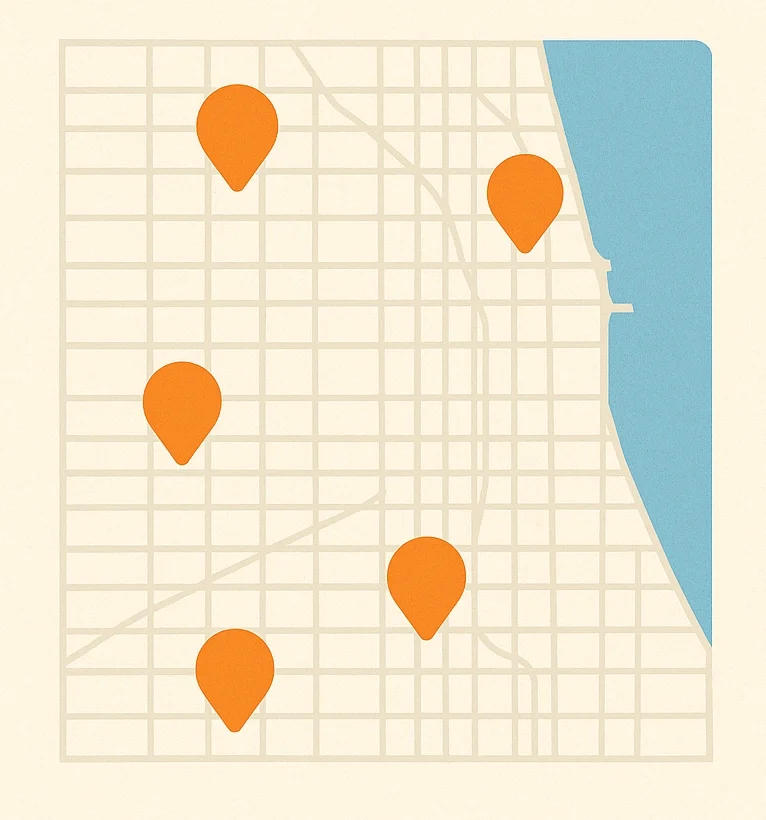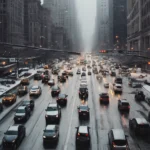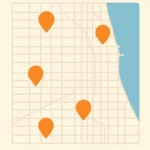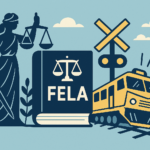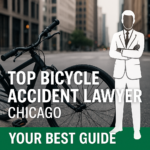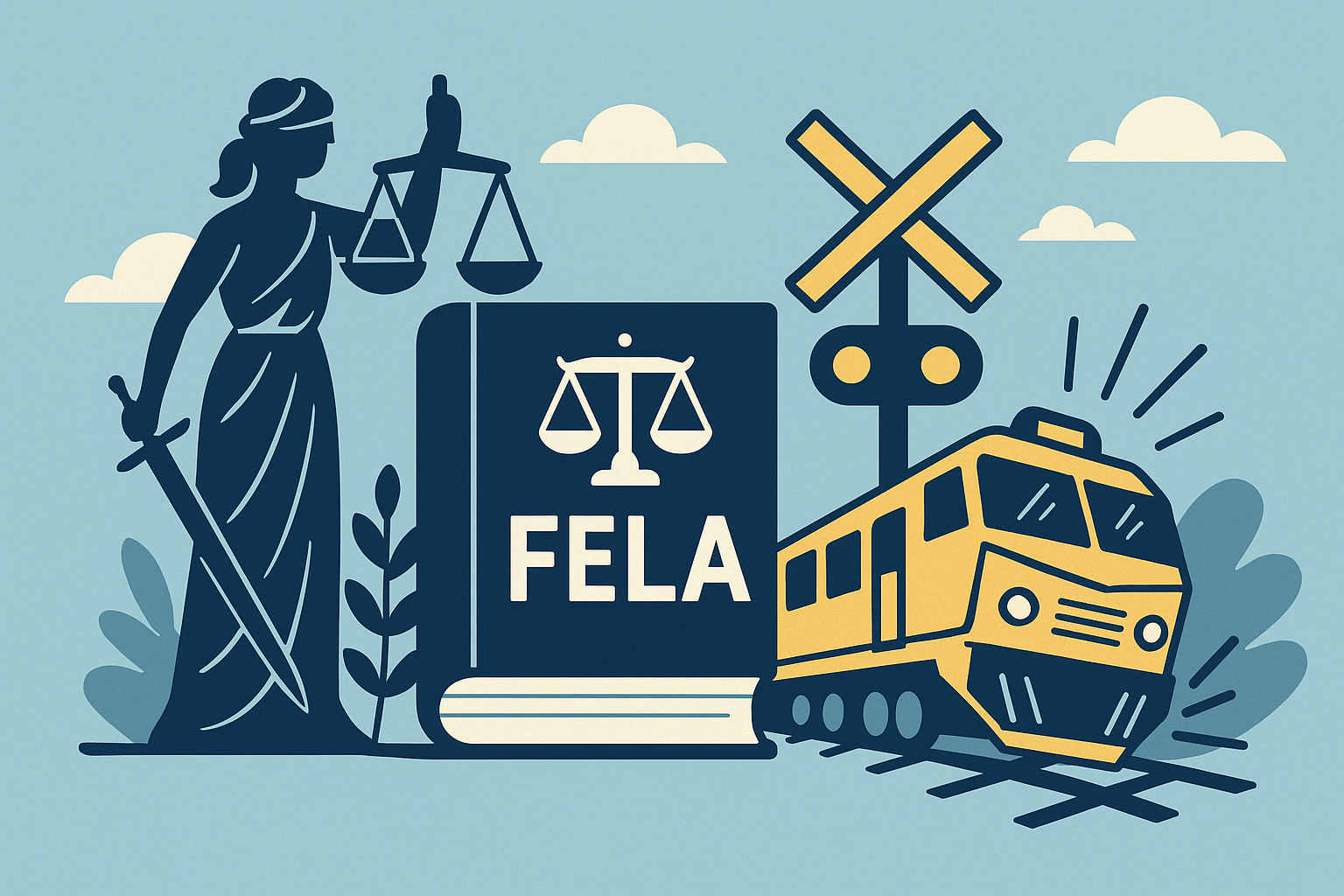Chicago’s streets are a melting pot of cultures, commerce, and unfortunately, traffic accidents. For victims of vehicle accidents in Chicago, knowing where these incidents frequently occur is crucial. This article highlights the most dangerous intersections in Chicago for traffic accidents, equipping you with knowledge and insights. We’ll explore factors contributing to these accidents and provide tips to enhance your driving safety throughout the city. Understanding the city’s traffic dynamics can help you make informed decisions and potentially avoid becoming a statistic.
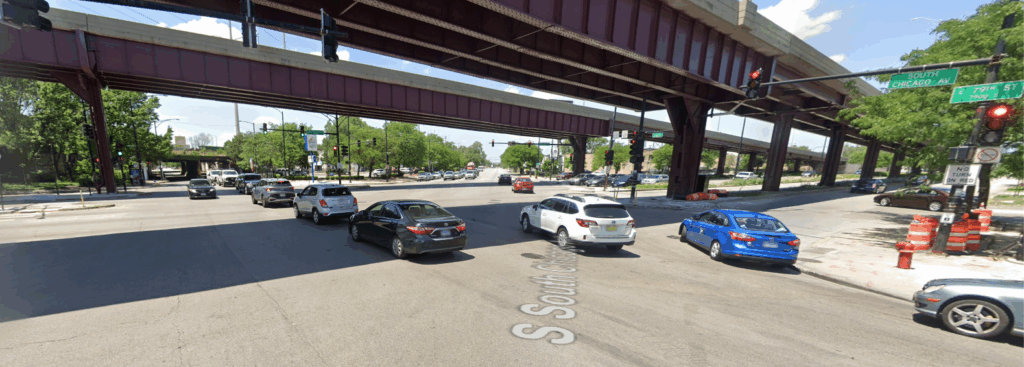
Intersection #1: Stony Island Avenue and South Chicago Avenue
The intersection of Stony Island Avenue and South Chicago Avenue represents one of the most hazardous traffic corridors in the city, where collisions occur with alarming frequency. This notorious crossroads has earned its reputation through a devastating combination of poor design elements and relentless traffic volume that creates a perfect storm for vehicular crashes. The intersection’s complex configuration of multiple lanes converging from different directions leaves drivers confused and vulnerable, particularly during peak travel times when real-time accident spikes are common.
Current traffic patterns at this location reveal a troubling trend of rear-end collisions and dangerous angle crashes. The intersection experiences its highest incident rates during morning and evening rush hours when frustrated commuters navigate through congested lanes while dealing with inadequate visibility and confusing lane markings. These incidents often involve multiple vehicles, creating chain reactions that can shut down traffic flow for hours and result in serious injuries.
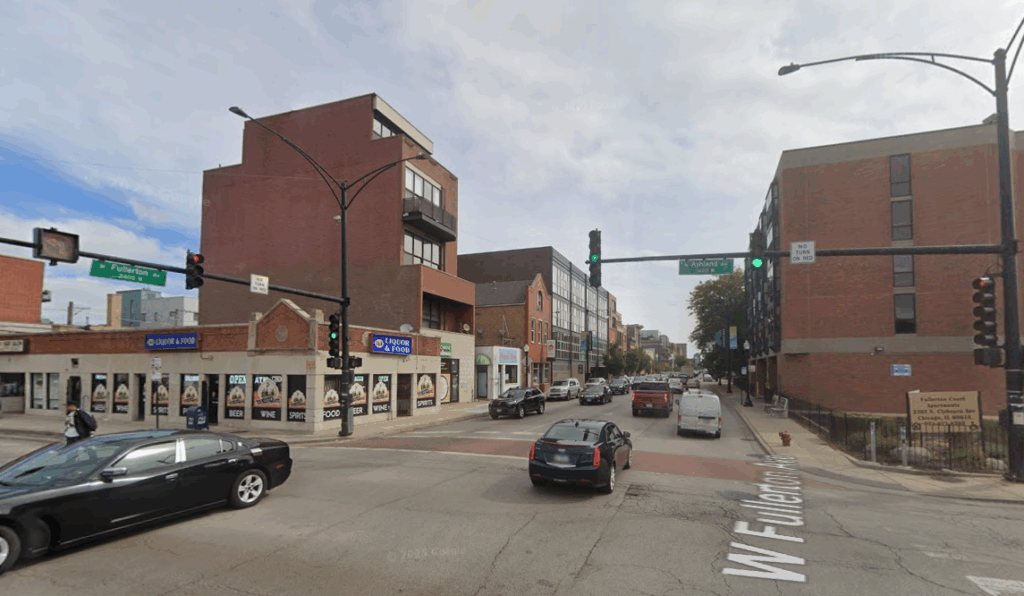
Intersection #2: North Ashland Avenue and West Fullerton Parkway
The intersection of North Ashland Avenue and West Fullerton Parkway stands as another critical hotspot for Chicago traffic accidents throughout the city. This busy crossroads sees thousands of vehicles daily, creating a perfect storm of conditions that contribute to frequent collisions and safety concerns. The intersection’s location in a densely populated area means that incidents occur here with alarming regularity, particularly during morning and evening rush hours when commuter volume peaks.
Multiple factors contribute to the elevated accident rates at this location. The intersection features complex traffic patterns with vehicles making sharp turns across multiple lanes of oncoming traffic. Heavy pedestrian activity from nearby businesses and residential buildings adds another layer of complexity, as drivers must constantly watch for foot traffic while navigating the busy roadway. These conditions make this area a frequent subject of local traffic accident reports filed by local authorities and insurance companies.
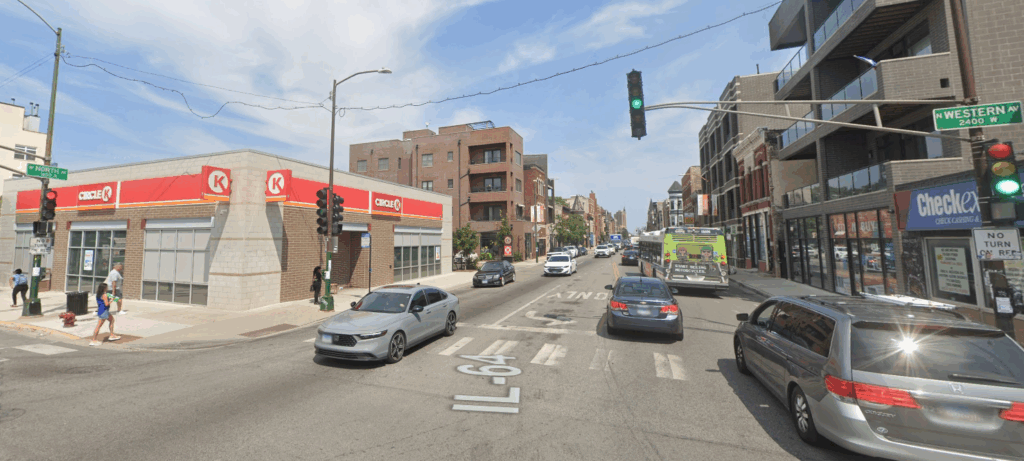
Intersection #3: Western Avenue and North Avenue:
This bustling intersection sees a constant stream of incidents due to its heavy commercial activity and multiple turning lanes. The combination of delivery trucks, commuter vehicles, and pedestrian crossings creates a perfect storm for collisions throughout the day. Drivers frequently report confusion navigating the complex traffic patterns, especially during peak hours when local traffic accidents spike significantly.
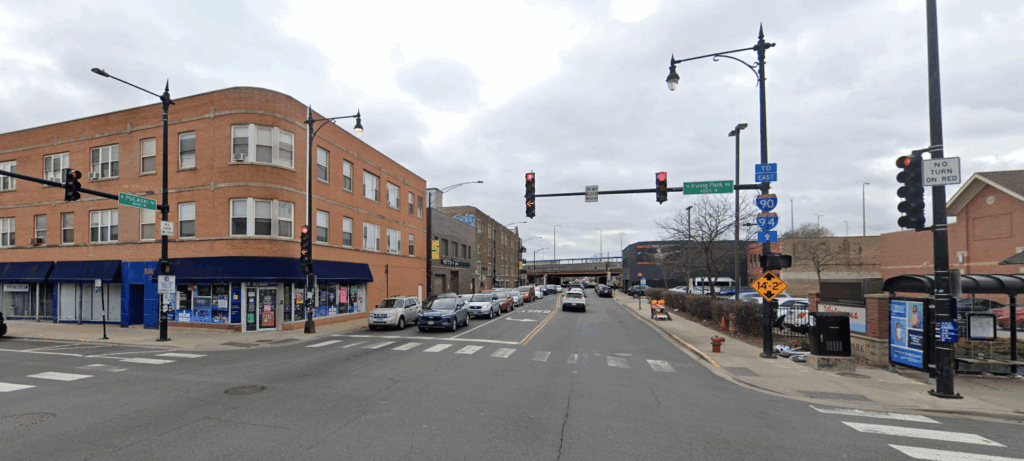
Intersection #4: Irving Park Road and Pulaski Road:
The intersection’s outdated signal timing contributes to frequent rear-end collisions and T-bone accidents. Morning and evening rush hours witness the majority of recent accidents at this location, with visibility issues compounded by nearby construction projects. The lack of dedicated turning signals forces drivers into dangerous decision-making situations that often result in preventable crashes.
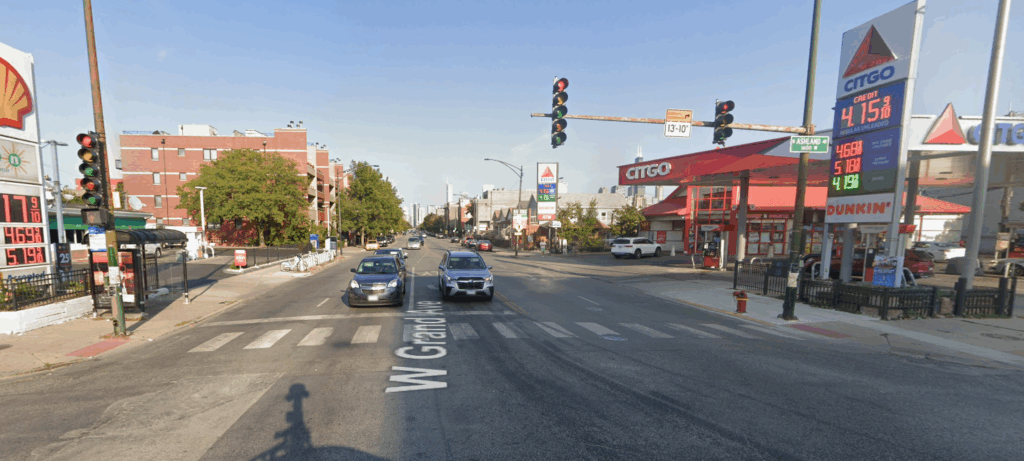
Intersection #5: Grand Avenue and Ashland Avenue:
Heavy industrial traffic mixed with residential commuters creates hazardous conditions where local traffic incidents occur with alarming regularity. Large commercial vehicles frequently block sight lines for smaller passenger cars, leading to dangerous merging situations. The worn pavement markings and faded signage contribute to driver confusion, particularly during adverse weather conditions.
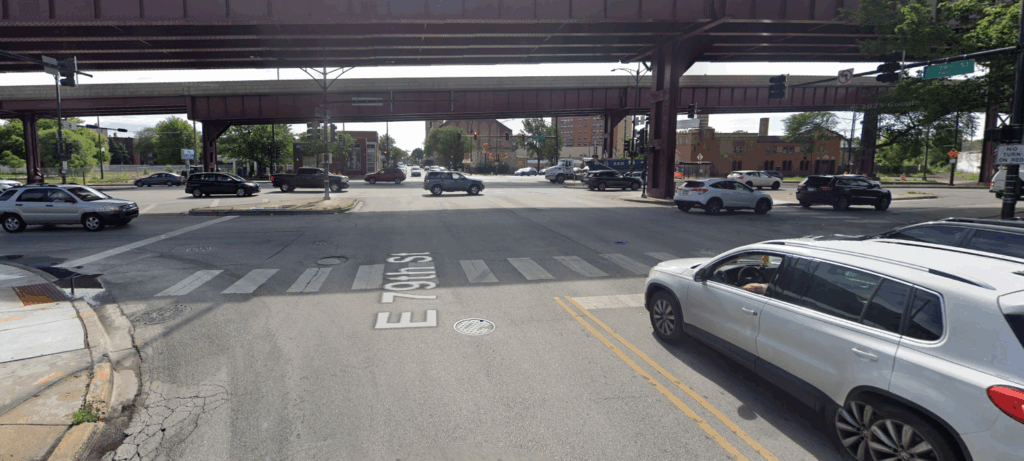
Intersection #6: 79th Street and Stony Island Avenue:
This South Side intersection experiences numerous traffic accidents due to its wide design that encourages speeding and reckless driving behaviors. The lengthy crossing distances put pedestrians at risk, while the multiple lanes create blind spots that contribute to side-impact collisions. Emergency responders frequently cite this location traffic accident report filings due to the severity of crashes that occur here.
Intersection #7: Fullerton Avenue and Western Avenue:
The convergence of three major traffic arteries creates a challenging environment where local traffic accidents happen despite moderate traffic volumes. Poor lighting conditions during evening hours significantly increase accident rates, while the proximity to entertainment venues brings impaired driving concerns into play. Weekend nights see particularly dangerous conditions with multiple factors contributing to serious collision risks.
Understanding the Traffic Accident Landscape in Chicago
Key Statistics and Trends
Motor vehicle accidents continue to plague Chicago’s roadways, with data revealing concerning patterns that affect thousands of residents annually. The frequency of these incidents has remained consistently high, with certain areas experiencing disproportionate rates of collisions. Real-time monitoring systems track live crash data, providing valuable insights into when and where these dangerous situations unfold across the metropolitan area.
Current data shows that collisions occur most frequently during peak commuting hours, with morning and evening rush periods accounting for nearly 40% of all reported incidents. Weather conditions significantly impact these numbers, with rain, snow, and ice contributing to a 60% increase in collision rates during adverse conditions. The winter months particularly see a surge in area-wide crashes, as drivers struggle with reduced visibility and hazardous road conditions.
Intersection-related crashes represent the largest category of reported incidents, accounting for approximately 35% of all occurrences. High-traffic corridors like Milwaukee Avenue, Cicero Avenue, and Lake Shore Drive consistently appear in local crash reports as problematic areas. These locations combine heavy congestion with complex traffic patterns, creating dangerous conditions for both experienced and novice drivers.
The rise of distracted driving has emerged as a significant factor in recent collision statistics. Mobile device usage while driving has contributed to a 25% increase in rear-end crashes over the past three years. This trend particularly affects younger drivers, with individuals aged 18-34 representing the highest percentage of distraction-related incidents.
Speed-related crashes continue to be a major component of the city’s roadway incidents. Despite enforcement efforts, excessive speed contributes to nearly 30% of all serious injury crashes throughout the city. These incidents often result in more severe injuries and higher fatality rates, making them a primary focus for traffic safety initiatives and legal proceedings.
Economic impact data reveals that car accidents generate substantial costs for both individuals and the broader community. Medical expenses, property damage, and lost productivity from these incidents exceed $2.8 billion annually. Insurance claims processing has become increasingly complex, requiring extensive documentation and investigation to determine fault and appropriate compensation levels.
Pedestrian and cyclist involvement has shown troubling increases, particularly in downtown areas and popular recreational zones. These vulnerable road users account for approximately 15% of all traffic-related injuries, with many incidents occurring at marked crosswalks and designated bike lanes. The data emphasizes the need for enhanced safety measures and increased awareness among all road users.
Seasonal variations significantly influence local crash patterns, with summer months typically showing higher overall incident rates due to increased recreational driving and construction activity. Holiday weekends consistently appear as peak periods in official crash statistics, with Memorial Day, Fourth of July, and Labor Day weekends showing the highest concentrations of serious crashes throughout the metropolitan area.
Common Causes of Accidents
- Distracted Driving: Mobile device usage remains a leading factor behind roadway incidents across the metropolitan area. When drivers text, make phone calls, or engage with social media while behind the wheel, their attention shifts away from critical driving tasks. This momentary lapse in focus frequently results in rear-end collisions, intersection crashes, and pedestrian strikes that contribute significantly to traffic incident data.
- Excessive Speeding: Speed-related incidents account for a substantial portion of daily vehicle collisions, with drivers exceeding posted limits or driving too fast for current conditions. Higher speeds reduce reaction time and increase the force of impact during collisions, often transforming what could have been minor fender-benders into serious injury crashes.
- Hazardous Weather Conditions: Chicago’s climate presents unique challenges that directly influence regional accident trends. Snow, ice, heavy rainfall, and fog create treacherous driving conditions that reduce visibility and road traction. During winter storms and severe weather events, emergency responders often report dramatic increases in crashes as vehicles lose control on slippery surfaces.
- Impaired Driving: Alcohol and drug impairment continues to play a significant role, particularly during evening hours and weekend periods. Impaired drivers experience reduced reaction times, poor judgment, and compromised motor skills that make them unable to respond appropriately to changing traffic situations..
- Aggressive Driving Behaviors: Road rage and hostile driving patterns contribute notably to live crash reports through dangerous maneuvers like tailgating, unsafe lane changes, and running red lights. Frustrated drivers who engage in aggressive behaviors create unpredictable situations that other motorists cannot anticipate, leading to multi-vehicle collisions and chain-reaction crashes.
- Unique Insight: Implementing comprehensive driver education programs that specifically address emotional regulation and stress management techniques could significantly reduce aggressive driving incidents. While traditional safety campaigns focus on mechanical aspects of driving, addressing the psychological factors that lead to road rage represents an underutilized approach to preventing Chicago traffic accidents and improving overall road safety in the metropolitan area.
Safety Tips for Navigating Chicago’s Intersections
Stay Alert and Focused:
Maintaining constant awareness of your surroundings is one of the most effective ways to prevent vehicle accidents. Distracted driving contributes to thousands of accidents each year, making it essential to keep your eyes on the road and hands on the wheel. Avoid using mobile devices, adjusting the radio, or engaging in other activities that take your attention away from driving. When you stay focused, you’re better equipped to respond quickly to sudden changes in traffic conditions and avoid becoming part of Chicago’s traffic accident statistics.
Observe Posted Speed Limits:
Following speed limits isn’t just about avoiding tickets—it’s a critical factor in preventing them. Excessive speed reduces your ability to react to unexpected situations and increases the severity of any collision that occurs. In areas where Chicago area traffic accidents are more common, such as construction zones or school districts, reducing your speed even further can provide that extra margin of safety needed to avoid crashes. Remember that speed limits are set based on road conditions, traffic patterns, and safety considerations specific to each area.
Use Turn Signals Consistently:
Proper signaling is a simple yet powerful tool for prevention. Other drivers rely on your signals to understand your intentions, whether you’re changing lanes, turning, or merging. Make it a habit to signal well in advance of your maneuver, giving other drivers adequate time to adjust their driving accordingly.
Anticipate Traffic Light Changes:
Understanding traffic light patterns can significantly reduce your risk. Many rear-end collisions occur when drivers make sudden stops at yellow lights or accelerate too quickly when lights turn green. By anticipating signal changes and maintaining a safe following distance, you can avoid the abrupt movements that often lead to auto crashes. This awareness is particularly important during rush hour when intersection-related Chicago area traffic accidents tend to spike.
Maintain Safe Following Distances:
The three-second rule remains one of the most effective guidelines for prevention. This simple technique gives you adequate time to react if the vehicle ahead stops suddenly or encounters an obstacle. During adverse weather conditions or heavy traffic periods when these accidents are more likely to occur, consider extending this distance even further. Remember that tailgating not only increases your crash risk but also contributes to the aggressive driving behaviors that lead to many preventable accidents.
What to Do if Involved in an Accident
1. Ensure Safety:
First, check yourself and passengers for injuries, and call emergency services if needed. Moving to a safe location away from traffic can prevent additional accidents. Your immediate safety takes priority over everything else, especially during busy periods.
2. Contact Law Enforcement:
It’s essential to file a police report, as this official accident report will be crucial for insurance claims and potential legal actions. Officers responding to Chicago-area traffic accidents can provide an objective assessment of the scene and create documentation that protects your interests.
3. Gather Evidence:
Capture photographs of the scene, vehicle damage, and any visible injuries. Documenting these details immediately can substantiate your situation more effectively, particularly since they can involve multiple parties with conflicting accounts. Take pictures from various angles and include street signs, traffic signals, and road conditions that may have contributed.
4. Exchange Information:
Share insurance and contact details with the other driver(s). Avoid discussing fault, as this can complicate legal processes related to traffic accidents. During stressful moments, it’s natural to want to apologize or assign blame, but these statements could impact your traffic accident report and subsequent claims.
5. Seek Medical Attention:
Even if injuries seem minor, a medical evaluation is crucial. Some symptoms might not appear immediately following the accident, and having a medical record is essential for health and legal reasons. Many people involved discover injuries hours or days later, making immediate medical documentation valuable for both recovery and potential compensation claims.
6. Call a Chicago Car Accident Lawyer
After you’ve ensured safety, contacted emergency services, documented the scene, and sought medical attention, it’s essential to involve a legal professional. Calling a Chicago car accident lawyer as soon as possible ensures your rights are protected from the start. An experienced attorney can help you navigate complex insurance claims, preserve crucial evidence, and advise you on what to say—or not say—to adjusters. Early legal guidance can make a significant difference in the outcome of your case, especially if fault is disputed or injuries are severe.
Quick Take Aways
- Traffic Incident Patterns: Chicago traffic accidents predominantly occur during peak commuting hours with a 60% increase during adverse weather, emphasizing the importance of real-time monitoring.
- Common Accident Causes: Distracted driving, speeding, and impaired driving are leading contributors. Addressing these behaviors through education could significantly reduce incidents.
- Financial and Emotional Impact: The economic burden from local traffic accidents exceeds $2.8 billion annually, affecting victims’ financial stability and psychological well-being.
- Intersection Hotspots: Areas like Milwaukee Avenue and Cicero Avenue report high accident rates due to congestion and complex traffic patterns.
Frequently Asked Questions
- What are the most dangerous intersections in Chicago?
Several intersections in Chicago are notorious for high accident rates. Among the most dangerous intersections in Chicago are Cicero Avenue and I-290, Ashland Avenue and Roosevelt Road, and Western Avenue and Madison Street. High traffic volume and complex layouts contribute significantly to their hazardous nature.
- Why are certain intersections in Chicago considered dangerous?
The most dangerous intersections in Chicago are often characterized by a high frequency of accidents, heavy traffic congestion, poor visibility, and complex traffic signal patterns. Factors such as distracted driving and inadequate pedestrian crossing facilities also increase the risk of accidents at these intersections. - What measures can drivers take to stay safe at dangerous intersections in Chicago?
To stay safe at the most dangerous intersections in Chicago, drivers should stay alert, reduce speed, and avoid distractions like mobile phones. It’s crucial to obey traffic signals and be vigilant for pedestrians and cyclists. Following these safety tips can significantly decrease the risk of accidents. - How can the city of Chicago improve safety at its dangerous intersections?
To enhance safety at dangerous intersections in Chicago, the city can implement better traffic signal synchronization, improve signage, and add protected turn lanes. Installing pedestrian-specific signals and improving roadway lighting can also contribute to reducing accidents at these high-risk locations. - Are there any ongoing projects to make Chicago’s intersections safer?
Yes, there are ongoing projects aimed at making Chicago’s intersections safer. The city is continuously working on infrastructure improvements, including the Vision Zero plan, which focuses on eliminating traffic fatalities and serious injuries. This involves redesigning streets to ensure they are safer for all users, including pedestrians and cyclists.
Conclusion
The landscape of Chicago traffic accidents underscores a pressing need for collective action to enhance road safety. The data tells a compelling story: from peak rush hour collisions to the significant role of adverse weather conditions, it is clear that intervention is essential. Understanding the common causes, such as distracted driving and excessive speeding, points to the critical impact of human behavior on road safety. If you’ve been injured in a traffic accident then please contact Ori Law Group for a free consultation.
References
- Illinois Department of Transportation (IDOT). Illinois Roadway Crash Data. Offers in-depth statistics and annual reports on intersection safety and the most hazardous locations statewide, including detailed Chicago intersection crash histories. [Illinois Department of Transportation][4]
- Chicago-Injury-Lawyer.org. 10 Most Dangerous Locations for Fatal Car Accidents in Chicago. Analyzes fatal accident frequencies at specific Chicago intersections using IDOT and NHTSA data from 2016–2024. [Chicago-Injury-Lawyer.org][1]
- Power Rogers. Chicago Accident Statistics 2025. Aggregates recent crash, injury, and fatality statistics for Chicago’s most dangerous intersections based on 2024 and 2025 incident reports; identifies intersection risk factors and geographic patterns. [Power Rogers][2]
- JM Injury Lawyer. What Are Most Dangerous Intersections in the United States? Presents national rankings of dangerous intersections, including Chicago locations, based on 2025 NHTSA data and contextualizes local risks in a broader U.S. pattern. [JM Injury Lawyer][3]


